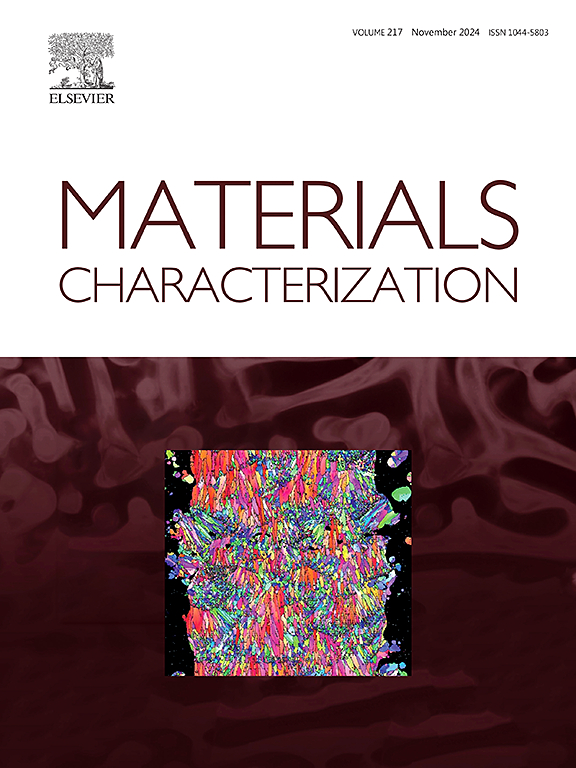Comprehending interface shearing behavior within a bulk Cu-Nb alloy using micromechanical testing
IF 4.8
2区 材料科学
Q1 MATERIALS SCIENCE, CHARACTERIZATION & TESTING
引用次数: 0
Abstract
Understanding the deformation mechanisms behind microstructural evolution during shear loading has been a long-standing area of interest. However, establishing a connection between microstructure, mechanical properties, and the extent of shear deformation is challenging and requires refined experimental approaches. Micro-shear testing offers a controlled method to introduce shear into small volumes of material, allowing for detailed site-specific microstructural characterization. In this work, we investigated the shear deformation behavior and properties of copper (Cu) matrix and at copper‑niobium (Cu-Nb) interfaces using micro-shear testing. The yielding under shear loading is dependent on the orientation of the interfaces. Intuitively, when the interface is along the shear direction, the flow stresses are lower compared to when it is across. Transmission electron microscopy examination shows stacking faults and high dislocation density dominating the deformation on the Cu side while limited dislocation activity in the neighboring Nb crystal. Moreover, an amorphous layer was observed at the Cu-Nb interface which likely formed after shear deformation. In summary, our study provides an understanding of the shear deformation behavior of phase-interfaces in an immiscible system at a micro-scale. The focus of the paper is demonstrating the applicability of the S-shaped pillar geometry for local shear measurements and deformation of specifically oriented interface boundaries.
求助全文
约1分钟内获得全文
求助全文
来源期刊

Materials Characterization
工程技术-材料科学:表征与测试
CiteScore
7.60
自引率
8.50%
发文量
746
审稿时长
36 days
期刊介绍:
Materials Characterization features original articles and state-of-the-art reviews on theoretical and practical aspects of the structure and behaviour of materials.
The Journal focuses on all characterization techniques, including all forms of microscopy (light, electron, acoustic, etc.,) and analysis (especially microanalysis and surface analytical techniques). Developments in both this wide range of techniques and their application to the quantification of the microstructure of materials are essential facets of the Journal.
The Journal provides the Materials Scientist/Engineer with up-to-date information on many types of materials with an underlying theme of explaining the behavior of materials using novel approaches. Materials covered by the journal include:
Metals & Alloys
Ceramics
Nanomaterials
Biomedical materials
Optical materials
Composites
Natural Materials.
 求助内容:
求助内容: 应助结果提醒方式:
应助结果提醒方式:


